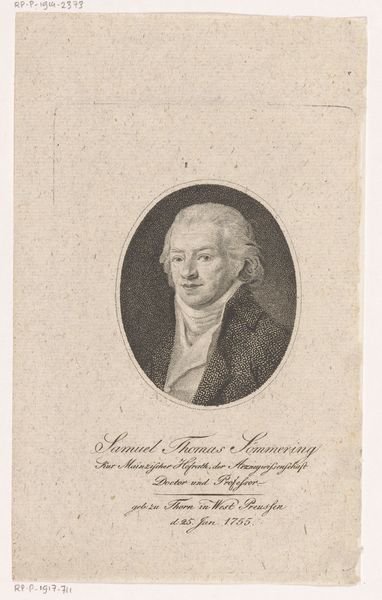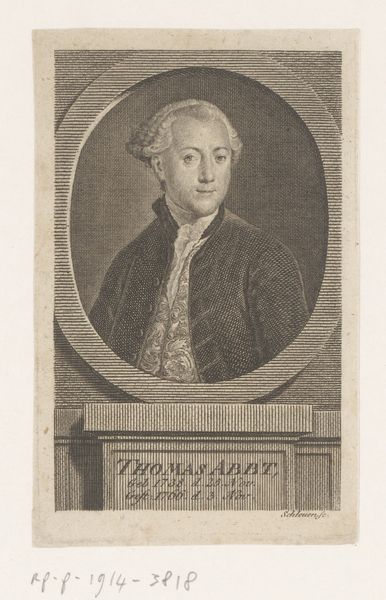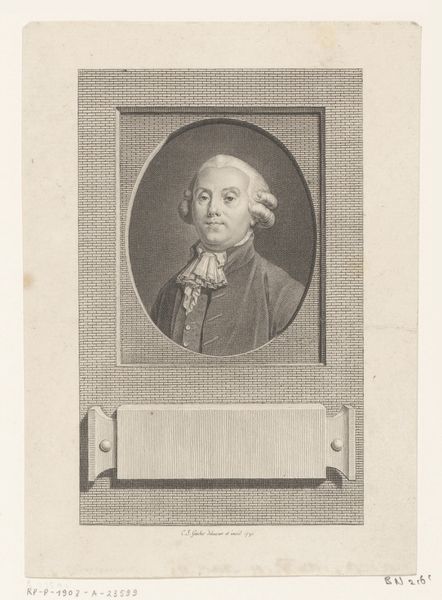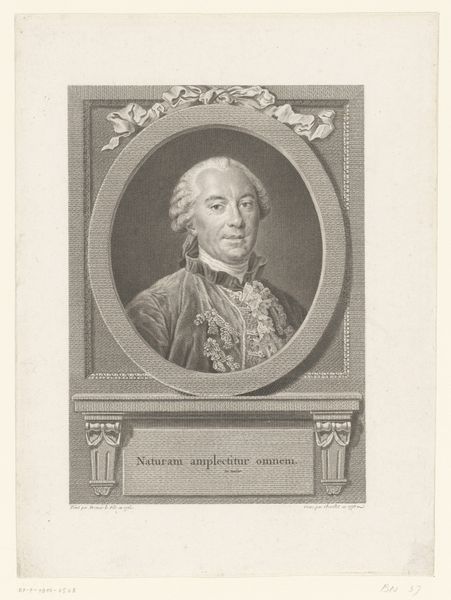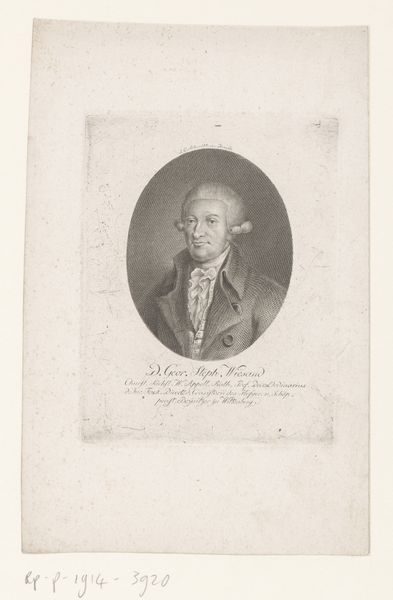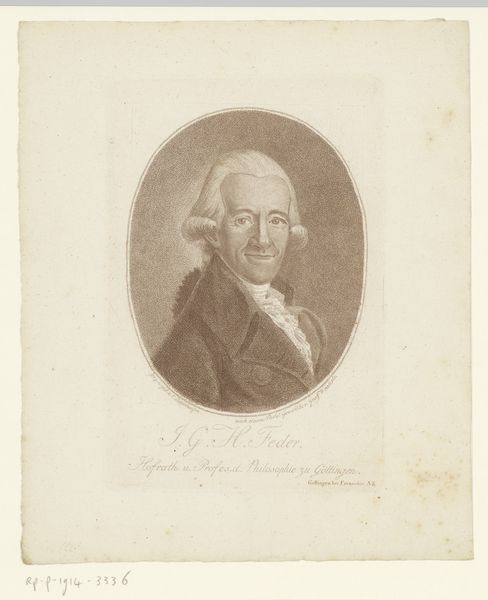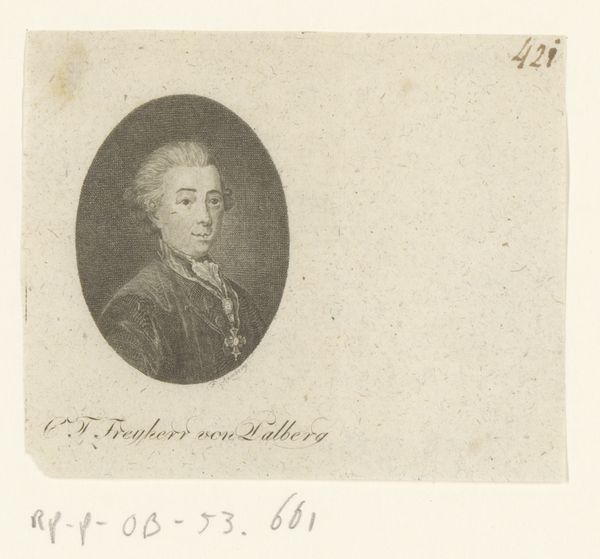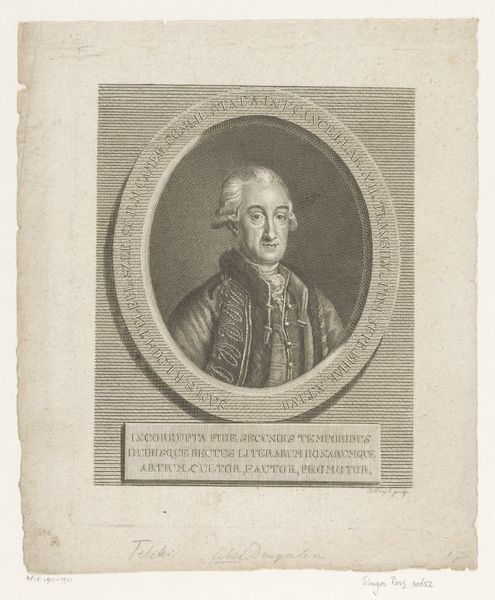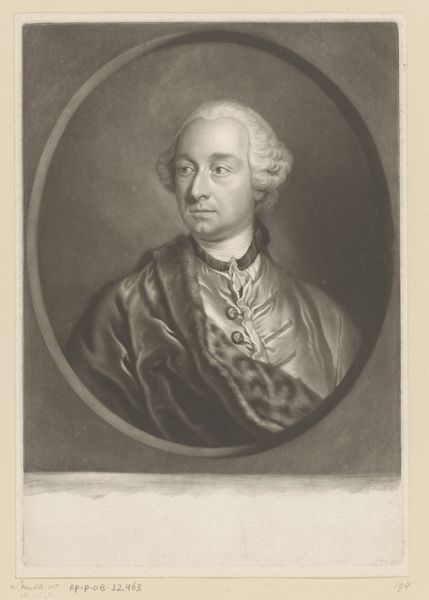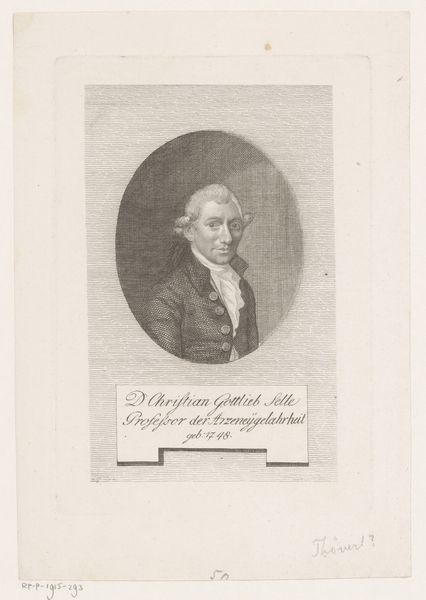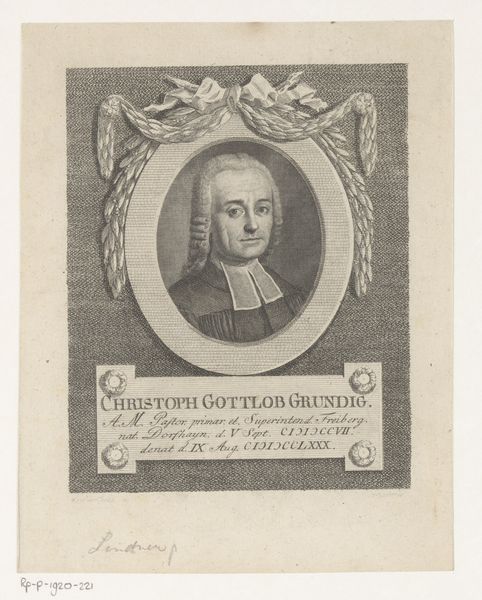
Portret van Johann Friedrich, Freiherr von Troeltsch 1790 - 1836
0:00
0:00
print, paper, engraving
#
portrait
#
neoclacissism
# print
#
paper
#
engraving
Dimensions: height 152 mm, width 95 mm
Copyright: Rijks Museum: Open Domain
Curator: Here we have a portrait of Johann Friedrich, Freiherr von Troeltsch. The engraving on paper was created sometime between 1790 and 1836 by Christoph-Wilhelm Bock. It’s part of the Rijksmuseum collection. Editor: My immediate impression is how severe yet composed the Baron appears. The starkness of the engraving highlights every detail—especially those intense eyes. It really projects authority and intelligence, don't you think? Curator: Absolutely. The circular framing around his bust adds to the effect, concentrating the viewer’s gaze. I read it as a kind of emblem, almost like a coin bearing the stamp of nobility. The portrait flattens time itself, doesn’t it? The fashion—that powdered wig—roots him firmly in the late 18th century. The symbol of status becomes more important than individual personality. Editor: Yes, and I'm intrigued by the medium itself, this detailed engraving. It’s interesting to consider the labor involved. It isn't just a quick sketch, there must have been quite an investment of time to transfer the image onto paper. This form of portraiture was much more accessible than painting for middle classes during that period. This piece could be mass-produced and copied—an aspect that painting cannot provide. It gives a face to aristocracy in a manner previously unseen. Curator: That's a really good point about accessibility and distribution of power. Beyond the purely aesthetic elements, consider the symbolic implications. He's presented as part of an unbroken lineage. Note the ornate script naming him and underscoring his noble status, and that date of birth as almost another attribute he possess. These little details cement the construction of lineage and name, something essential for the aristocracy’s enduring influence. Editor: Considering your point, I am drawn back to how meticulous the technique is. From the baron’s subtle expression to the lettering in that neoclassical style, everything implies that this work sought to preserve and promote an image—almost like an act of political engineering in paper form. Curator: Indeed. So, beyond simply seeing a portrait, we're witnessing a crafted symbol. We have decoded a visual encapsulation of history, status and material culture, all pressed into paper through skillful labor. Editor: It certainly gives a completely fresh sense to this material artifact!
Comments
No comments
Be the first to comment and join the conversation on the ultimate creative platform.
